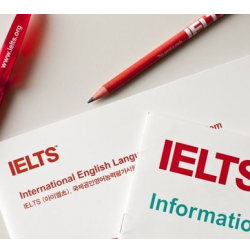Raising Awareness of Diversity in the Language Classroom

۲۵ تیر ۱۳۹۷
Raising awareness of diversity in the language classroom
In most groups of learners there will be some obvious differences that everyone can see (e.g. age, gender, ethnicity). Depending on the setting, there may be differences in the learners’ linguistic profiles (which languages a person understands/speaks/ reads/writes) and lifestyle choices (e.g. working patterns, dietary choices, religious affiliations). Even in apparently homogeneous groups there will be aspects of identity that individual members may or may not be happy to disclose, such as specific skills and talents (e.g. musical prowess or sporting achievement) or sexual orientation.
In the language learning context, perhaps the most significant dimensions of diversity relate to physical or sensory impairment (e.g. a long-term health issue or hearing loss) and neurodiversity (i.e. non-typical ways of processing information, often identified as dyslexia, dyspraxia or another specific learning difference). It is these aspects that this article focuses on, because of the challenges they present for language learners.
Inclusive classrooms
In many schools and colleges, the drive to create a more inclusive learning environment is picking up pace. Teachers (as well as publishers and exam boards) are discovering that it is possible to adapt classroom management, materials and processes to make them more accessible to increasingly diverse cohorts of learners. The use, for example, of pastel-coloured handouts and more multisensory activities is very much to be applauded and encouraged. However, these practical changes in the classroom will remain superficial signs of inclusive practice unless they are accompanied by a fundamental shift in underlying attitudes, of both the teaching staff and the students themselves.
To achieve this, members of the learning community need to become aware of just how diverse they are as a group, and to value what each individual can contribute – including themselves. Teachers play a crucial role in establishing an inclusive culture in their classrooms and can build awareness-raising activities into the language curriculum. There are several ways in which this can be achieved, including group discussions, the use of materials featuring diverse characters and experiential activities.
Activities for raising awareness of diversity
Our first goal as language teachers is always to encourage our learners to make use of their developing language. Giving them a genuine communicative purpose and making it personal to them are two good ways of achieving this. For students beginning their journey to greater self-awareness, teachers could devise an inventory of learning skills for them to rate themselves on. This could include items such as ‘I keep my notes in order’, ‘I always make a note of homework and the date it should be done’ or whatever is appropriate to their level. Students could rate themselves privately, but then discuss with other students which ones they find most challenging, exchanging tips about how they could improve these aspects of learning. From these discussions, it will probably become clear that some students have already got good study strategies in place, even if some of them seem a little unusual. Revisiting the checklist later in the course helps learners to reflect on how they have improved and what they still need to work on.
Students could work in small groups to create class surveys and explore how other members of the class like to work. Each group could take a topic, such as ‘learning vocabulary’, ‘writing’ or ‘grammar practice’, create a checklist or a short interview schedule and then gather the information from their peers. When they have gathered and sorted the data, they could present to the class what the most common/ ingenious/effective strategies and methods might be. The ensuing discussion will quite probably reveal the diversity in the group, and the hidden talents that some students bring to their learning. Exploration of learning strategies could also be embedded into a board game, a letter-writing activity (perhaps letters to an academic ‘agony aunt/uncle’) or even a game of bingo. For more ideas, see Anderson (2017) and Smith (2017).
Making use of materials that include a diverse range of characters is another great way of initiating discussion and raising awareness of the issues. There may be no explicit mention made in the text of this diversity, thereby sending the implicit message that this is just how the world is. Students may see characters that they can relate to more easily, and feel more included generally. Other materials, such as the ‘Adventures on Inkling Island’ comic strips (Smith, 2018), explicitly showcase the daily challenges and talents of neurodiverse people, demonstrating that being different can be a strength in some situations.
A powerful way of enabling people to understand how it might feel to be in the minority on a daily basis, whether in terms of physical abilities or cognitive function, is to set up experiential activities which challenge the participants to perform unusual tasks in conditions that make their usual way of working impossible. As well as being a fun way of introducing the topic for further discussion, these activities are usually very memorable and drive home the message that – in the vast majority of cases – lack of success in academic tasks is not due to laziness or stupidity.
Conclusion
Raising awareness of hidden aspects of diversity in the group does not demand that individuals publicly identify their characteristics (e.g. ‘Hands up if you’re dyslexic!’). Rather, it is about creating an environment where people could safely share that information if they felt it was relevant to the discussion. Most importantly from a language teaching perspective, a classroom community that is aware of and embraces its own diversity is likely to engender more productive learning. In addition, awareness-raising activities could enable some individuals to understand themselves better, and so adapt their learning strategies to become more effective and efficient learners. This self-awareness can also lead to enhanced self-esteem, sustained motivation and, ultimately, success.
References
Anderson, J (2017) ‘Peer-needs Analysis: Sensitising learners to the needs of their classmates’. English Teaching Professional.
Smith, AM (2018) Adventures on Inkling Island. Morecambe: ELT well.
Smith, AM (2017) Raising Awareness of SpLDs. Morecambe: ELT well.
Source: https://www.teachingenglish.org.uk/article/raising-awareness-diversity-language-classroom


